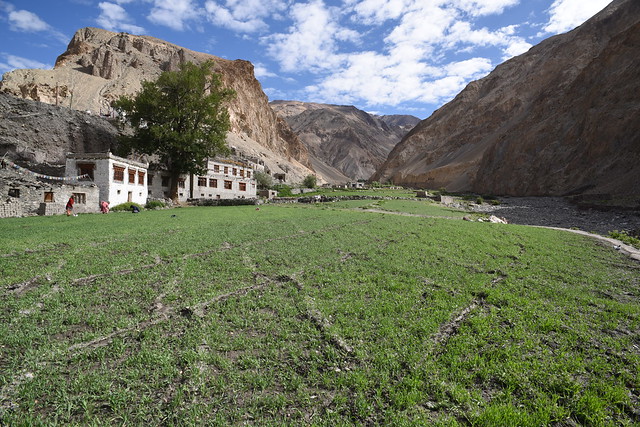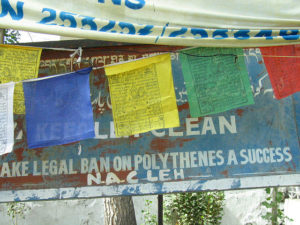A Ladakhi man who made one of his life goals protecting wildlife in the Hemis National Park told his story in a blog post on February 21. He and his co-villagers in the mountains of Ladakh decided that increasing the numbers of wildlife would promote tourism and provide economic benefits to the local economy, as opposed to their traditional hunting which had kept wildlife wary and scarce. His story is indicative of the Ladakhi propensity for adapting their traditional thinking to fit changing conditions.

The Markha River Valley through the national park, the focus of the essay by Sonam Nurboo, has become one of the most popular trekking routes in Ladakh. But the author begins his story by telling how he desperately wanted to see a wolf when he was a kid growing up in a village in the Markha region. He pestered his father to help him get a good look at one, which only prompted laughter from the man. He predicted his son would react in fear if he were really able to confront one. Besides, they avoid humans, he told the boy.
But the shyness of wildlife toward people observed by Nurboo’s father has been gradually lessening. Villagers now can easily spot wildlife from their rooftops. They approach the village fearlessly. This factor now attracts conservationists and tourists to brave the mountains and visit the area in order to enjoy the wildlife sightings.

The author provides the background to his story. The people in the Markha Valley used to be very poor—they lacked many necessities. They cultivated enough barley and wheat for their own needs but they did not have the disposable income to allow them to purchase fruits and vegetables from outside their mountain valley. Food scarcity prompted people to depend on game meat as a supplement.
As the people began to rely increasingly on hunting deer, wild sheep, and ibex, the numbers of those prey species declined, which caused the numbers of snow leopards that relied for their food on those animals to decline also. Furthermore, the lamas in this primarily Buddhist region of Ladakh expressed their opposition to all killing of animals and many of the villagers agreed with them. But faced with a choice between following Buddhist teachings and starving, the villagers chose to hunt in order to put at least some food on the table.
Nurboo finished his education and decided to focus his career on helping wildlife by getting a job with a tour operator. He first worked as a helper in a tour company until he got a position as a tourist guide—a “dream job,” he called it. From his experiences guiding people in such places as the Annapurna Base Camp in Nepal in the 1990s, he learned that stricter laws protecting wild areas were important for maintaining healthy animal populations. He also learned that people would begin to respect wildlife when they could see their own economy benefiting from the spending by tourists who came to view the animals.

In 2015 he returned to his homeland, the Markha Valley, to see if he could improve the conditions for wildlife there. He decided to run for elective office as sarpanch of his village, an official position. Naturally, wildlife conservation became a priority. He called on officials from the wildlife department as well as other influential local people to get wildlife programs working, with a special emphasis on building tourism.
He realized that the government had to help the villagers provide food for their families, so it implemented agricultural support programs such as greenhouse farming. It also helped farmers fence their farms to protect their crops from the deer, ibex, and sheep. The government also constructed some paths to make it easier for tourists to walk to good wildlife viewing spots.
The local children were included in programs designed to foster awareness of the importance of wildlife to the community. The young people started pressing their elders to protect wild animals from indiscriminate hunting. The local lamas did their part to preach the value of sensible village management of wildlife.
The author concludes that as of now the Markha Valley has excellent populations of wolves, deer, ibexes, blue sheep and snow leopards. People live “in peace and harmony with wild animals,” he maintains, which no longer fear their human neighbors. People commonly spot these animals fairly close to the village. Nurboo hopes that his childhood dream of having close-up views of wild wolves will come to pass someday.

While his essay has a self-congratulatory element to it, nonetheless it does reflect a tendency of the Ladakhi people to take charge of their own environmental conditions and do something to correct the problems they see. For instance, they perceived that non-recyclable, single-use plastic bags harmed their natural environment. In order to address the problem, they outlawed them completely in 1998, long before most of the world was aware that the bags pose an environmental threat.
Their solution to protecting wildlife by developing tourism would not necessarily fit other communities but it does reflect the Ladakhi temperament. Don’t just complain—do something.